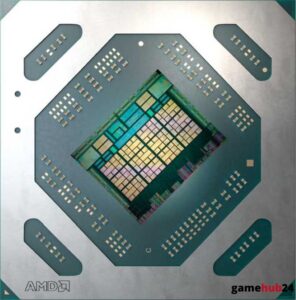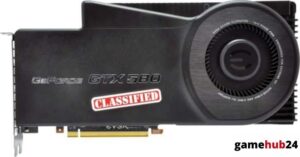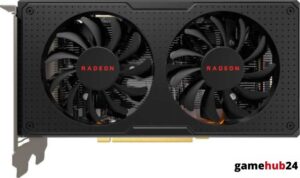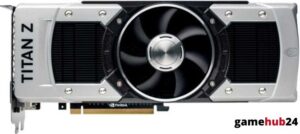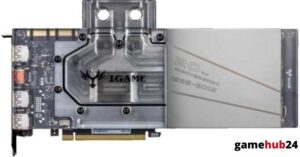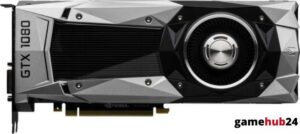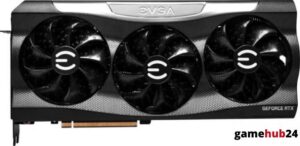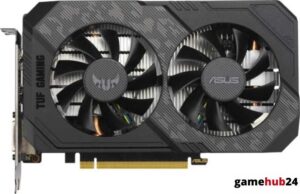At the vanguard of cutting-edge graphics, Ray Tracing technology creates incredibly realistic visuals by mimicking light. The study of this technique’s interactions with different hardware and software components is intriguing, as is the way it has impacted the gaming industry.
A cutting-edge method for 3D rendering, ray tracing follows the path of light as pixels in an image plane to create incredibly lifelike lighting and shadows. It is utilized in a number of graphics hardware products, such as gaming engines like Unreal Engine and Unity Engine and graphics cards like Nvidia’s RTX series and AMD’s Radeon RX series. While methods like light tracing and route tracing add to the overall realism, real-time ray tracing improves dynamic lighting effects. Ray tracing is made easier to implement in games and other real-time rendering applications by APIs such as Microsoft DirectX, OpenGL, and Vulkan API.
- Ray tracing simulates light to create lifelike images, enhancing the visual fidelity of games and other real-time rendering applications.
- Nvidia’s RTX series and AMD’s Radeon RX series leverage ray tracing for realistic visuals, despite its heavy load on GPU performance.
- Game engines like Unreal Engine and Unity Engine implement ray tracing to simulate realistic lighting and shadows.
- APIs like Microsoft DirectX, OpenGL, and Vulkan API provide a standardized interface for implementing ray tracing, contributing to the advancement of 3D rendering technology.
What is the basic concept of ray tracing in computer graphics?
The pinnacle of cutting-edge graphics technology is Ray Tracing Technology, a ground-breaking 3D rendering technique. This method mimics light by following the path of light as pixels in an image plane and lighting the scene to produce realistic-looking images. The key to ray tracing is its capacity to create incredibly lifelike shadows and lighting. By following the path that light would take if it were to go from the viewer’s eye to the light source, it is able to determine the hue of individual pixels. This methodical procedure takes into account the geometry and material characteristics of the items in the picture as well as the light source. The outcome is an incredibly lifelike picture that captures the intricacy and depth of natural lighting.
What is the role of light tracing in ray tracing?
An essential component of ray tracing is light tracing, which tracks light rays away from the camera and toward the light source. This technique is essential for producing realistic lighting effects because it faithfully replicates how light scatters off objects and lights other areas of the image. When dealing with complicated lighting conditions, such caustics and indirect illumination, where light is reflected or refracted in elaborate patterns, light tracing is especially useful. This method can capture the minute details of light and shadow that add to the overall realism of the generated image by following the path of light from its source.
How does path tracing contribute to ray tracing?
A technique for simulating light that follows light paths from the camera to the light source is called path tracing, which is a type of ray tracing. It’s a thorough method that takes into account all of the different directions that light might go, such as scattering, refraction, and reflection. Images produced with this technique include precise lighting and shadows and are incredibly realistic. When it comes to managing challenging lighting conditions like caustics and indirect lighting, path tracing excels. It adds to the overall accuracy of the generated image by capturing the complex interaction of light and shadow by taking into account all conceivable light routes.
Did you know that Scott Roth coined the phrase “ray tracing” in a paper back in 1982? His research at Saarland University served as a precursor to the advancement of contemporary ray tracing methods.
How does ray tracing work in real-time rendering?
A breakthrough in 3D rendering technology, real-time ray tracing simulates light and its interaction with virtual objects in real time. With the use of sophisticated graphics technology, light beams are tracked in real-time, and pixel colors are determined by taking into account the characteristics of objects in the picture as well as the light source. Because real-time ray tracing can rapidly adapt to changes in lighting conditions and object placements, it is very useful for creating dynamic lighting effects. The deep, incredibly realistic images produced by this skill improve the gaming experience.
What is the significance of global illumination in real-time rendering?
Global lighting is essential to real-time rendering because it helps produce realistic and engrossing images. By using this technique, other portions of the picture can be illuminated in a manner similar to how light bounces off real-world surfaces. Both direct lighting from the light source and indirect lighting from reflections and refractions are considered in the concept of global illumination. The great level of realism produced by this all-encompassing lighting technique improves the visual accuracy of scenes that are created in real time.
How does reflection mapping enhance real-time rendering?
By replicating reflected surfaces, a technique called reflection mapping improves real-time rendering. It generates the appearance of a reflecting surface by projecting a texture onto a virtual object. When imitating intricate reflecting surfaces like polished metal or water, this approach works especially well. Reflection mapping gives the scene more depth and richness while also enhancing the produced image’s overall authenticity. The visual appeal of real-time produced sceneries is improved by reflection mapping, which faithfully replicates the way light interacts with reflective surfaces.
What are the key differences between Nvidia RTX and AMD Radeon RX in terms of ray tracing?
A vital component of cutting-edge graphics technology, ray tracing is implemented in two distinct ways by the Nvidia RTX and AMD Radeon RX hardware. Ray tracing is handled by dedicated RT cores in Nvidia’s RTX series, which produces incredibly realistic graphics with little impact on speed. However, AMD’s Radeon RX series takes a different tack, handling ray tracing by utilizing the capabilities of its RDNA 2 architecture. Both methods produce beautiful images, but they are not as effective or efficient in terms of performance, and their benefits vary based on the particular needs of the application.
A word of caution to game developers: Real-time ray tracing can be very taxing on the GPU, but it can also greatly improve the visual integrity of your game. For the purpose of enhancing the efficiency of your ray tracing system, think about utilizing methods such as Bounding Volume Hierarchy (BVH).
How does Nvidia RTX utilize ray tracing?
Ray tracing is a technique used by Nvidia’s product Nvidia RTX to produce incredibly realistic images. Dedicated RT cores in the RTX series manage the intricate computations needed for ray tracing. The RTX series can create incredibly lifelike visuals with precise lighting and shadows while yet keeping excellent performance thanks to this specialized hardware. With its approach to ray tracing, the RTX series offers a level of visual quality that was previously unattainable in real-time rendering, marking a significant development in 3D rendering technology.
What is the approach of AMD Radeon RX towards ray tracing?
Compared to Nvidia RTX, AMD’s Radeon RX takes a different ray tracing method. The RDNA 2 architecture of the Radeon RX series is used to manage the intricate computations needed for ray tracing. The Radeon RX series can create incredibly lifelike graphics with precise lighting and shadows thanks to this technique. The Radeon RX series can produce excellent performance and outstanding images despite lacking the RTX series’ specialized ray tracing hardware because to its strong architecture and effective design.
How do game engines like Unreal Engine and Unity Engine implement ray tracing?
Ray tracing is used by gaming engines such as Unreal Engine and Unity Engine to improve the visual realism of their games. These engines create visually appealing and engaging gaming environments by simulating realistic lighting and shadows with ray tracing. These engines can faithfully replicate the way light interacts with virtual objects by following light’s journey from the camera to the light source, producing incredibly lifelike images. With the ability to generate images with a level of visual realism that was previously unattainable in real-time, the incorporation of ray tracing in these engines marks a huge development in gaming visuals.
What is the role of ray tracing in Unreal Engine’s graphics?
The Unreal Engine relies heavily on ray tracing to improve the visual integrity of the games it powers. Ray tracing is a technique used by Unreal Engine to create visually appealing and engaging gaming landscapes by simulating realistic lighting and shadows. The way light interacts with virtual objects may be precisely simulated by Unreal Engine by following light’s journey from the camera to the light source. For developers seeking high visual fidelity, Unreal Engine is the go-to option because of the incredibly realistic visuals that it produces, which improve the game experience.
How does Unity Engine leverage ray tracing for better visuals?
Ray tracing is used by Unity Engine to improve the visuals of its games. Unity Engine is capable of producing incredibly lifelike images with precise lighting and shadows by modeling the path of light and how it interacts with virtual objects. With this method, highly realistic visual gaming settings are produced. Ray tracing, which Unity Engine has implemented, is a major development in game graphics and gives creators a strong tool for making visually spectacular games.
What is the impact of ray tracing on GPU performance?
Even though ray tracing creates amazing images, it can negatively affect GPU performance. Reduced frame rates may result from the GPU being overworked due to the intricate calculations needed for ray tracing. Nonetheless, this effect has been lessened by developments in GPU technology, such as the strong RDNA 2 architecture in AMD’s Radeon RX series and the specialized ray tracing cores in Nvidia’s RTX series. These developments open the door for the next wave of visually spectacular games by enabling the use of ray tracing in real-time rendering without significantly sacrificing performance.
How does ray tracing affect the performance of Nvidia RTX GPUs?
Ray tracing requires sophisticated calculations, which Nvidia RTX GPUs with dedicated RT cores are intended to handle. Although ray tracing can place a large strain on the GPU, the dedicated hardware of the RTX series lessens this effect, making it possible to integrate ray tracing without noticeably sacrificing performance. This implies that RTX GPU-powered games may maintain high frame rates while showcasing incredibly lifelike graphics with precise lighting and shadows. With its use of ray tracing, the RTX series offers a level of visual quality that was previously unattainable in real-time rendering, marking a significant development in GPU technology.
What is the effect of ray tracing on AMD Radeon RX GPUs?
Ray tracing requires intricate calculations, which AMD Radeon RX GPUs with the RDNA 2 architecture can do. Although ray tracing can strain the GPU to a breaking point, the robust architecture and effective design of the Radeon RX series lessen this effect. This implies that despite maintaining excellent speed, games powered by Radeon RX GPUs may boast incredibly realistic images with precise lighting and shadows. The ray tracing method used by the Radeon RX series marks a substantial leap forward in GPU technology and provides a degree of visual fidelity and performance that is unmatched in the industry.
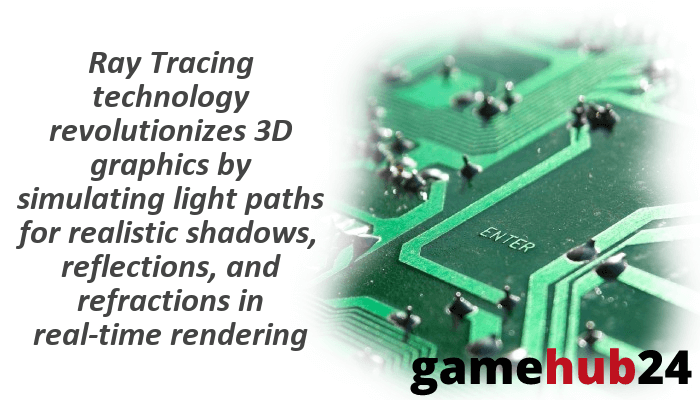
How does ray tracing technology interact with APIs like Microsoft DirectX, OpenGL, and Vulkan API?
Ray tracing technology can be used in games and other real-time rendering applications by interacting with APIs such as Microsoft DirectX, OpenGL, and Vulkan API. These APIs give developers access to a collection of methods and functions that facilitate the effective use of GPU resources, allowing them to incorporate cutting-edge graphics techniques like ray tracing. These application programming interfaces (APIs) are essential to the development of 3D rendering technology because they offer a standardized interface between the program and the GPU.
What is the role of DirectX Raytracing in ray tracing technology?
Ray tracing technique greatly benefits from the use of Microsoft DirectX’s DirectX Raytracing capability. It offers a standardized interface that may be used to create ray tracing in real-time rendering applications like as games. With DirectX Raytracing, developers can take advantage of the capabilities of contemporary GPUs to produce incredibly lifelike images with precise shadows and lighting. DirectX Raytracing advances 3D rendering technology by offering a collection of ray tracing functions and techniques, opening the door for the next wave of visually spectacular games.
How do OpenGL and Vulkan API support ray tracing?
Two well-known graphics APIs, OpenGL and Vulkan API, allow ray tracing by offering a collection of methods and functions that make this sophisticated graphics technology easier to use. These APIs let programmers take advantage of the capabilities of contemporary GPUs to produce incredibly lifelike images with precise lighting and shadows. The development of 3D rendering technology is greatly aided by OpenGL and Vulkan API, which offer a standardized interface between the program and the GPU. Their ray tracing functionality helps make visually spectacular games and other real-time rendering applications possible.





